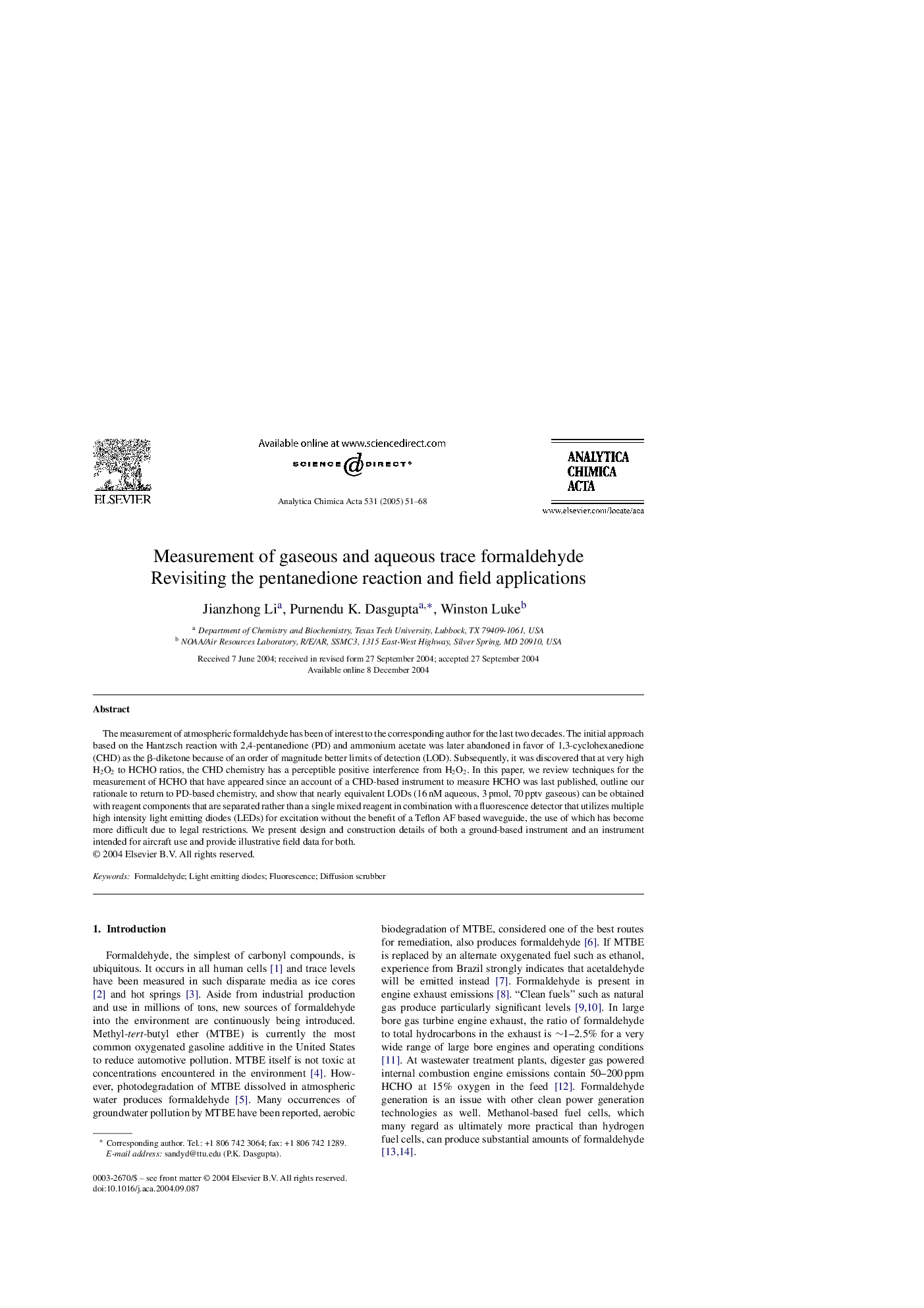| Article ID | Journal | Published Year | Pages | File Type |
|---|---|---|---|---|
| 10530053 | Analytica Chimica Acta | 2005 | 18 Pages |
Abstract
The measurement of atmospheric formaldehyde has been of interest to the corresponding author for the last two decades. The initial approach based on the Hantzsch reaction with 2,4-pentanedione (PD) and ammonium acetate was later abandoned in favor of 1,3-cyclohexanedione (CHD) as the β-diketone because of an order of magnitude better limits of detection (LOD). Subsequently, it was discovered that at very high H2O2 to HCHO ratios, the CHD chemistry has a perceptible positive interference from H2O2. In this paper, we review techniques for the measurement of HCHO that have appeared since an account of a CHD-based instrument to measure HCHO was last published, outline our rationale to return to PD-based chemistry, and show that nearly equivalent LODs (16 nM aqueous, 3 pmol, 70 pptv gaseous) can be obtained with reagent components that are separated rather than a single mixed reagent in combination with a fluorescence detector that utilizes multiple high intensity light emitting diodes (LEDs) for excitation without the benefit of a Teflon AF based waveguide, the use of which has become more difficult due to legal restrictions. We present design and construction details of both a ground-based instrument and an instrument intended for aircraft use and provide illustrative field data for both.
Related Topics
Physical Sciences and Engineering
Chemistry
Analytical Chemistry
Authors
Jianzhong Li, Purnendu K. Dasgupta, Winston Luke,
